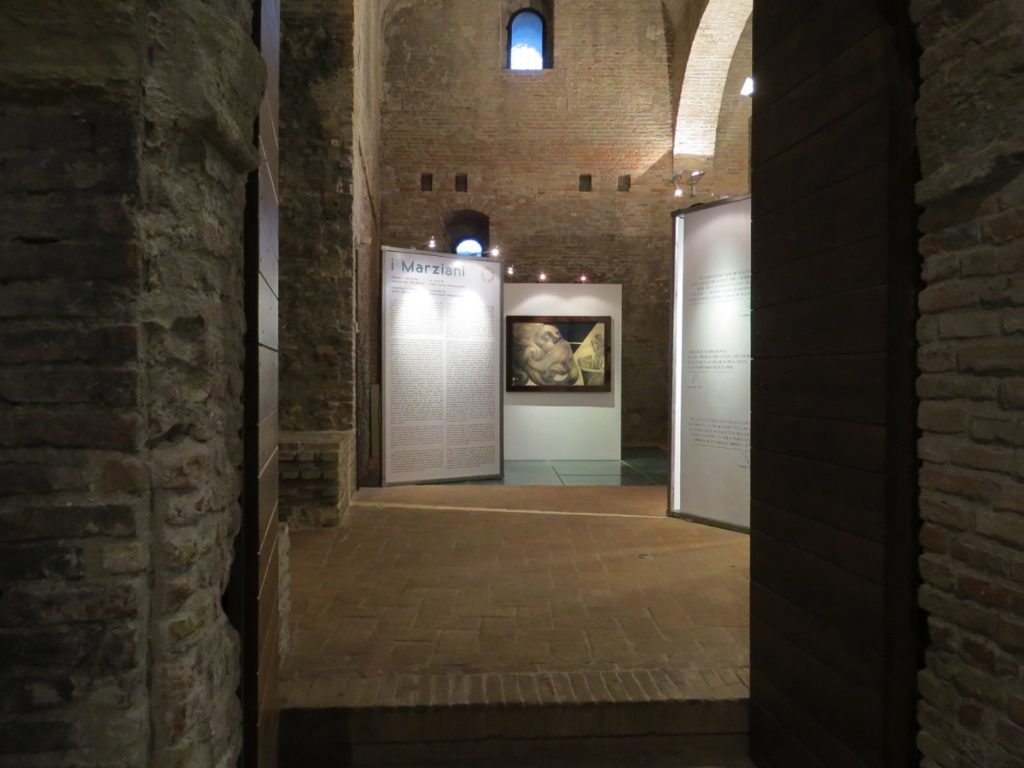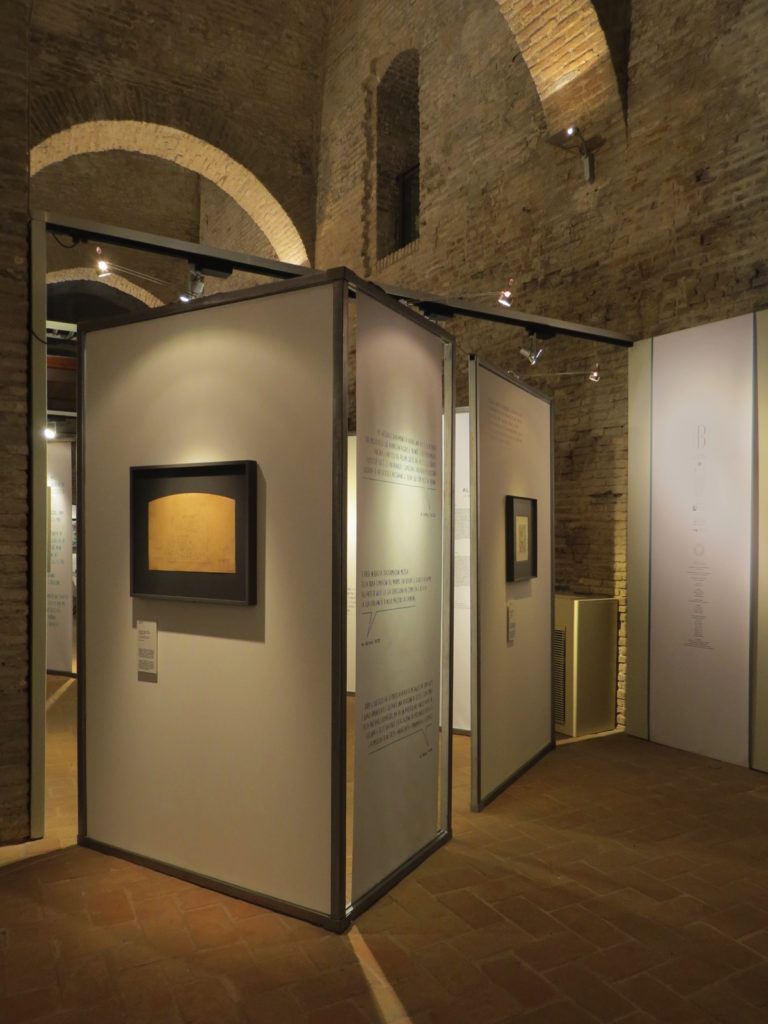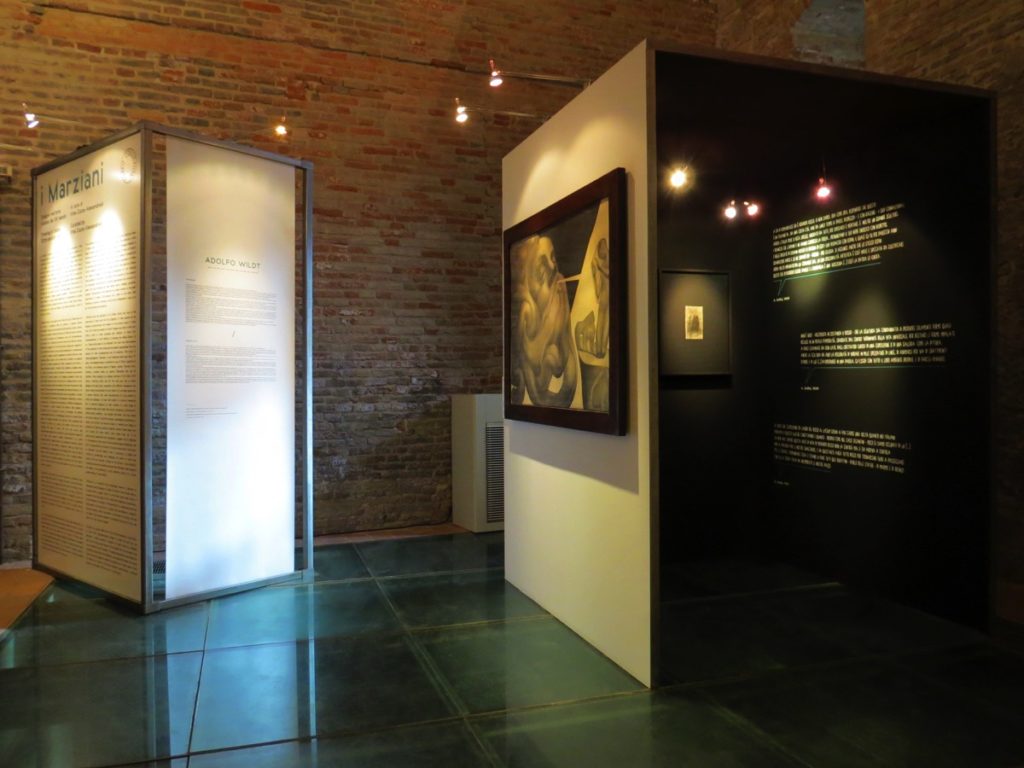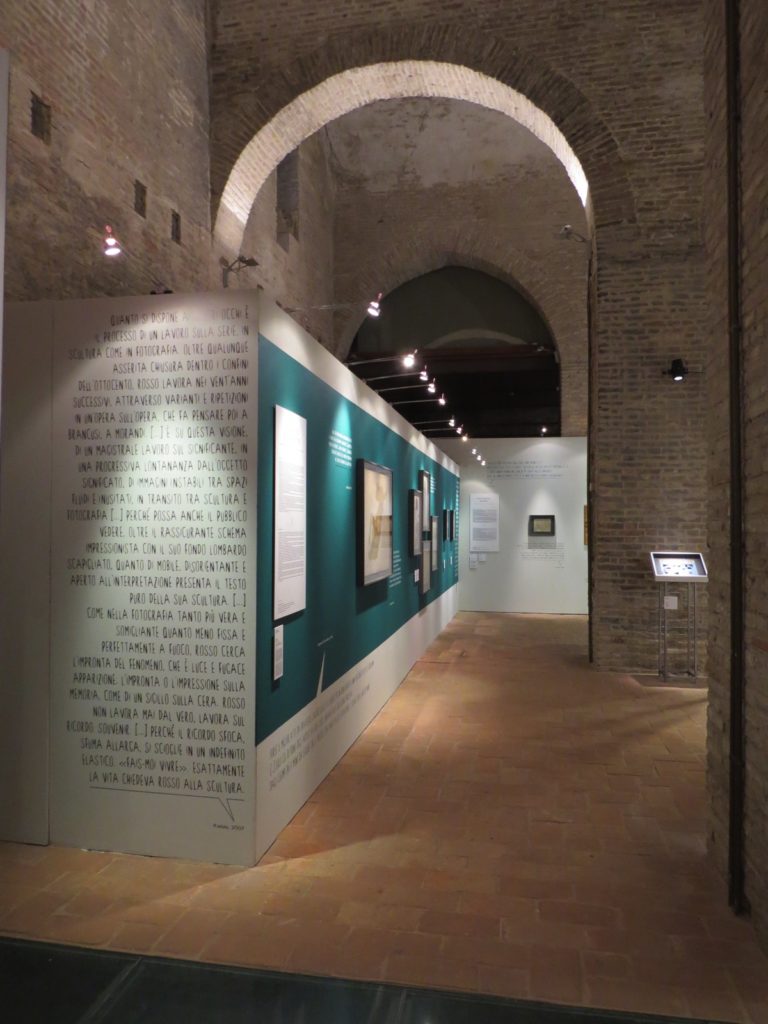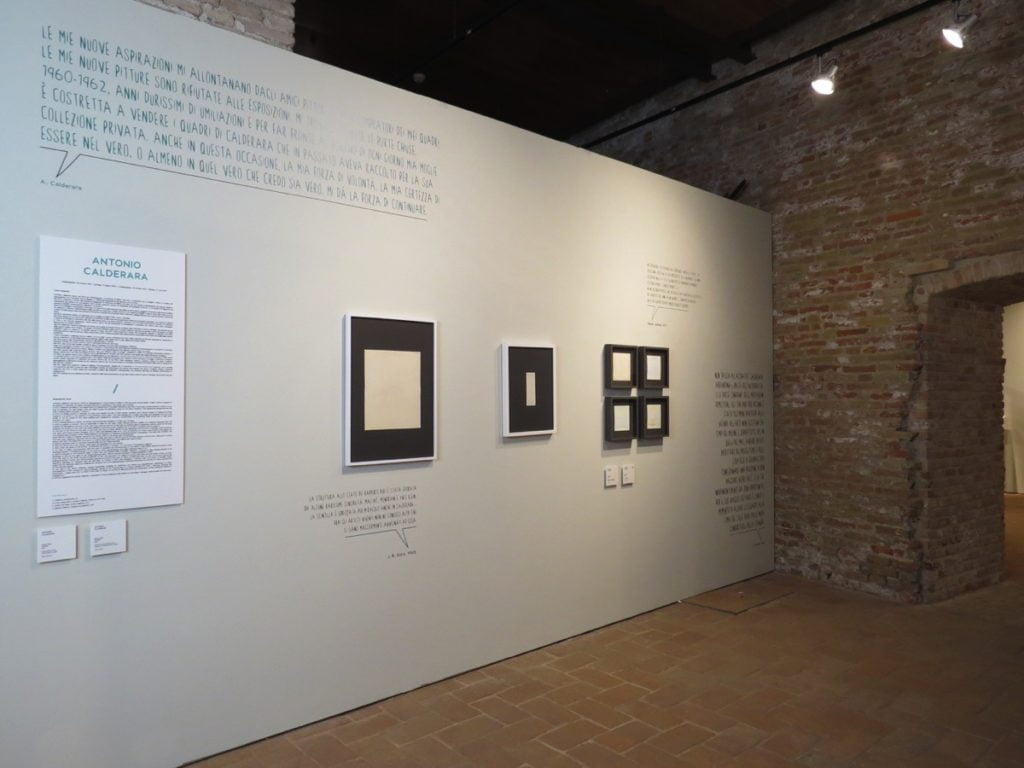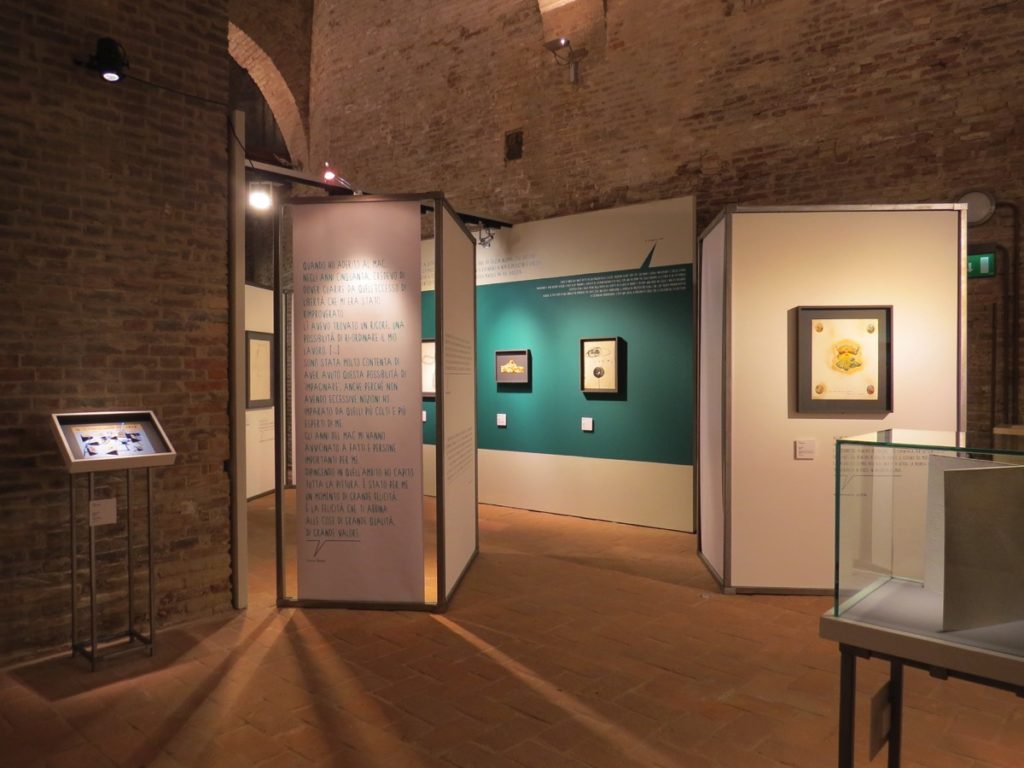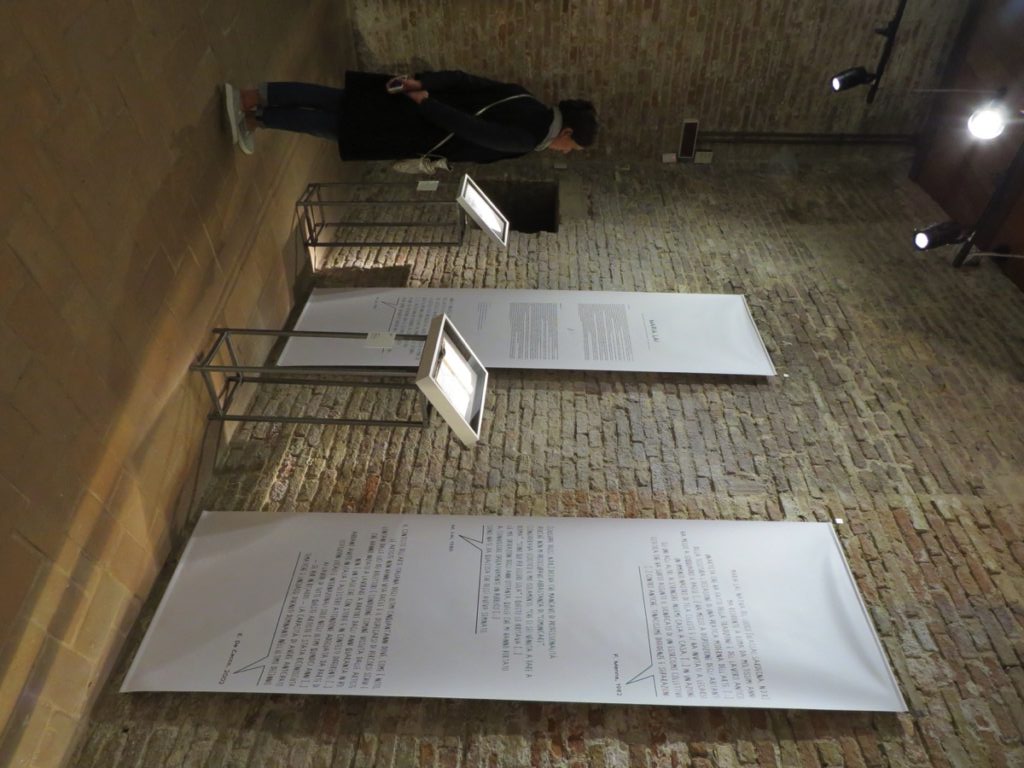The exhibition contains about sixty works from the Ramo Collection of Milan, open to the public for the first time. The collection, which began several years ago due to the interest of Giuseppe Rabolini in drawing and works on paper, retraces the phases of Italian art history through a focus on drawing, seen not only as a means of preparation for paintings and sculptures, but also as a primary expression of Italian artistic research. Starting with the early 1900s, the collection follows the traces on paper of the great protagonists of the historical avant-gardes, all the way to the 1990s. The intention of the collector is to document the evolution of stylistic approaches with artworks on paper (not just drawings but also watercolors, collages, gouaches, pastels). The purpose of the collection is to bear witness to the great importance of Italian 20th-century art, while at the same time fostering a culture of drawing, with its own independent value, on a par with painting and sculpture.
I Marziani puts the spotlight on 16 Italian artists who due to the importance of their work and the originality of their poetics can be defined as anachronistic with respect to the artistic output of their time. All of them are models of artistic freedom and faith in their own efforts, which at times coincided with isolation, at times with incomprehension, or with difficulty in entering the official history of art. These artists seem to be detached from their own time because of the originality of their styles and the subjects approached, like true meteors for their contemporaries and for posterity. The works of these paradigmatic “Martians” in the Ramo Collection span about 90 years, from Medardo Rosso to Mondino by way of Wildt, Cagnaccio di San Pietro, the American period of Depero, Munari, Tancredi, Gnoli, Calderara, Cavaliere, Rama, Lai, Agnetti, Baruchello, Baj, and De Dominicis. What emerges is an oblique overview of the Italian 20th century, featuring artists who for the most part had no direct dialogue with each other, associated with different movements and styles. Having revolutionized the very idea of art and been impervious to market fashions, they were misunderstood for long periods by critics and audiences. At times their inability to promote themselves and to cultivate collectors, or their interest in a wide range of expressive media which made them hard to categorize, contributed to create market instability – just consider Baruchello, who has worked with video, editing of found film footage, assemblages and painting, or Munari who shifted from industrial design to teaching, set design to projections of painting, sculpture, graphics. Some of these talents met with acclaim only after death, while others have yet to be appropriately appreciated and recognized, a neglect that is reflected by the absence of their works in international museum collections, and lack of documentation on the part of national institutions. Their status as “Martians” has also made it hard, a posteriori, to create the archives to authenticate and catalogue the works of artists like Munari, Gnoli and Tancredi. Though all the artists in the exhibition received prizes and had admirers during their lifetimes, today research still needs to be conducted on their aesthetic history for a fuller understanding of their poetics.
I Marziani is an exhibition that encourages viewers to discover or reconsider certain chapters of Italian art history from the last century through works on paper (most of which have never been shown in museums) from the angle of new visual and intellectual intersections. Critical reception is the key of interpretation to understand what has taken place in the past and to expand the contemporary viewpoint through drawing, which has meant so much also for artists who did not make it their elective medium of expression, and are not very well known for their works on paper.
The aim is to prompt reflection on the critical response to the artists, on what their contemporaries thought of their art and how we perceive it today, precisely in relation to their status as outsiders then, and to the ups and downs of the acclaim that has brought them to our attention over the years. Through biographical notes flanked by comments and articles from different eras placed between the works, visitors are encouraged to ponder the destinies of these talents. With its selection of some of the most maverick personalities, I Marziani presents the Italian 20th century in a new light.

